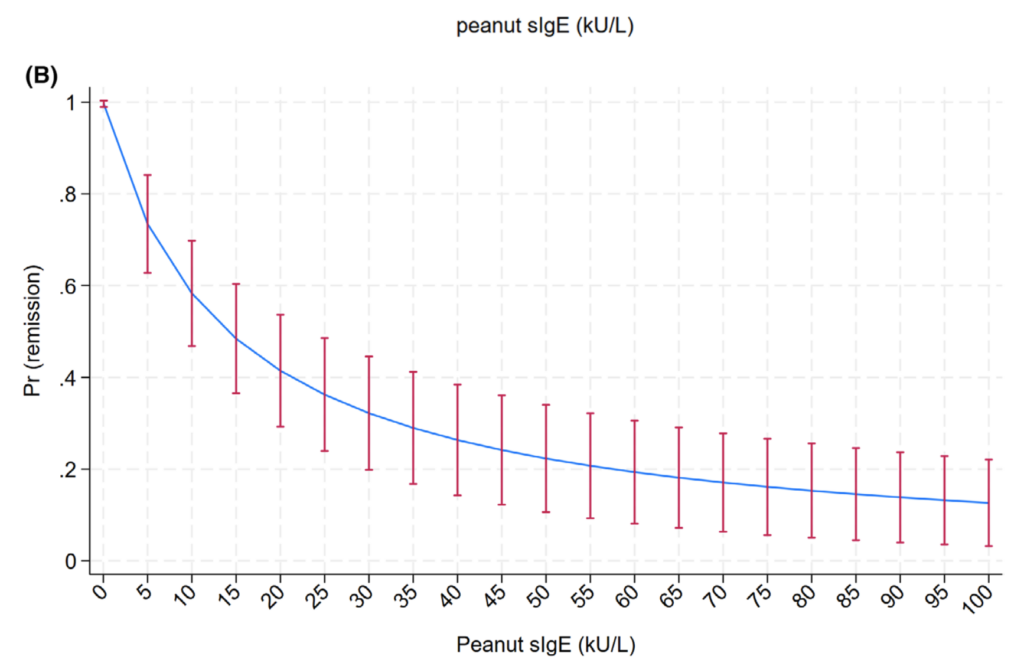Italian review of 11 studies of the use of the Anti-IgE medicine Omalizumab in oral immunotherapy (OIT) – Pharmaceuticals 2025 Mar 20;18(3):437.
3 studies looked at peanut allergy. Schneider’s study looked at 13 children aged 8-16. On the first day of OIT, all passed a 500mg dose of peanut flour! Within 8 weeks, all but 1 could manage a 4000mg dose. Hardly any side effects or adverse reactions were reported.
Brandstrom’s study looked at 23 young people aged 12-19. All reached a 2800mg dose within 10 weeks. Curiously, IgE did not change significantly whereas skin prick test results decreased.
There has only been 1 randomized controlled study, using a placebo, similar results were found, with most subjects managing 4000mg within 8 weeks of starting OIT.
Studies that looked at treating multiple food allergies simultaneously are also reviewed (up to 5 different foods!). Protocols were individualised, of course. Omalizumab was given in Begin’s study for 8 weeks before and 8 weeks after starting OIT, again using a “rush protocol”. 1 severe reaction was seen. Median time to reach 4000mg maintenance was 18 weeks.
So many obvious potential benefits. The optimal dose and duration (prior to, and after starting OIT) of omalizumab has yet to be determined, unfortunately. Some people adjust for body weight, others for total IgE level. Cost is a major issue, of course.


